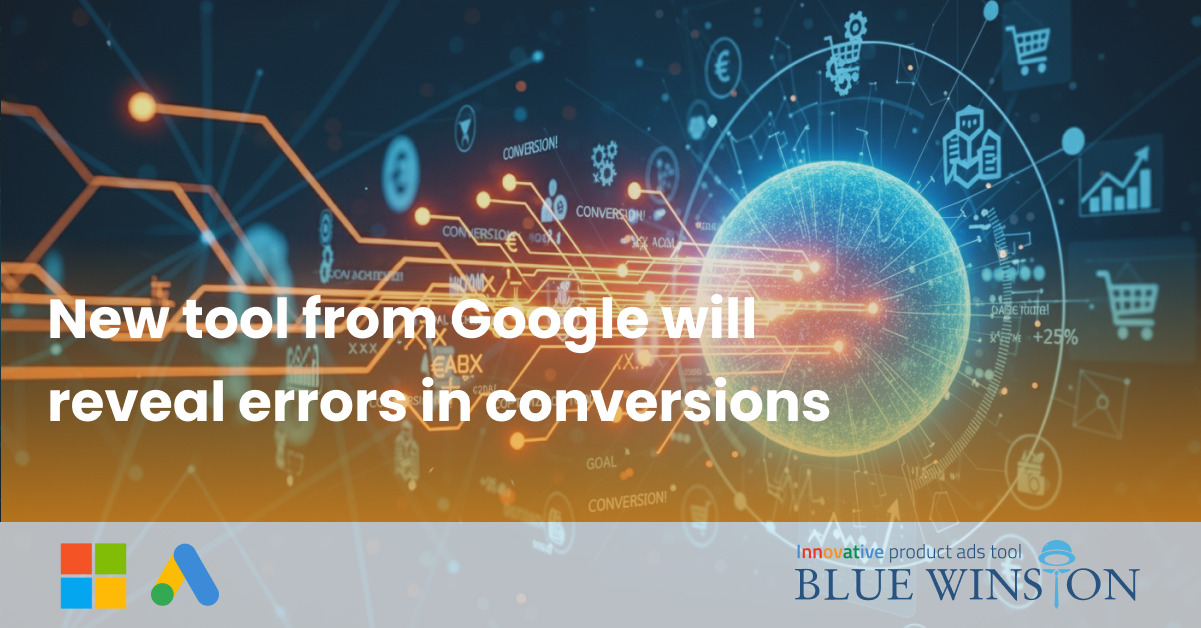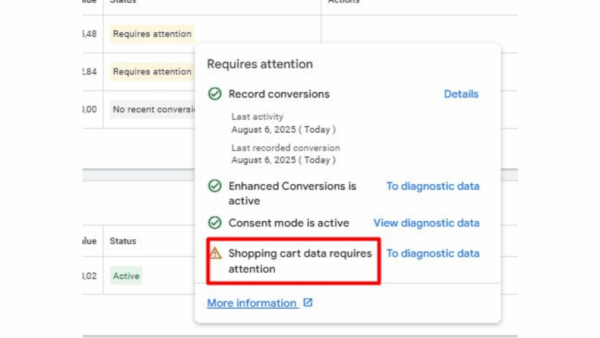The customer made a purchase. Conversion recorded. Everything seems fine. But only until Google asks: “Do you know exactly what you’re selling? And does your campaign know it too?”
The new Conversions with Cart Data Diagnostics tool in Google Ads is not just another report. It’s a clear reality check for your online store. And if your data isn’t clean, Google will show you – without sugarcoating it.
Conversion is not just a number
Google wants to see the product, price, quantity, and more…
Standard conversion tracking tells you that a customer bought something, but not exactly what → and that’s a problem.
Google Ads, especially Performance Max and Shopping campaigns, rely on detailed product data. For the algorithms to make good decisions, they need an accurate overview of what was sold, for how much, and in what quantity.
That’s why Google is becoming more demanding. The new tool checks whether the seller is sending complete information with every conversion. It’s no longer enough to just confirm that a purchase happened. You need to know – and report – what was bought, the price, the quantity, and the product ID.
Then comes the deeper check. The system compares this data with what’s in your Merchant Center. If there’s a mismatch, you’ll get a warning right away. But it’s not just about something not matching. The bigger issue is that the system can’t properly attribute revenue to your business. And if it can’t do that, your campaign optimization won’t work as it should.
Diagnostics
Once the check is run, Google assigns the seller an overall quality rating for their conversion data. In the best-case scenario, the status is “Excellent” everything runs smoothly, and the data is working as it should. One level below is “Good” the status is still positive, but there are minor issues that could be worth fixing.
However, if the status “Need Attention” appears, it means the seller’s data integrity has some cracks. These issues might not yet be critical, but they are already holding back the full potential of the campaigns.
Source: Search Engine Land
However, when the system displays the status “Urgent”, that’s a red flag. In this case, the data is inaccurate, incomplete, or completely off and the seller is essentially flying blind in their campaigns.
What’s the good news? Google will show you exactly what’s wrong and how to fix it. Clearly, step by step, and in a way that’s easy to understand.
Ignoring it?
Get ready for skewed results…
If this doesn’t feel like a priority, here’s what’s at stake. Poorly connected or inaccurate cart data means your reports are distorted, your ROAS calculations are unreliable, and your decisions are based on an incomplete picture of reality.
What to do now?
The solution is simple and quick. Just open Google Ads, go to the conversion actions section, and hover over the “Status” column. There, you’ll see a diagnostics window with your rating and specific notes on what needs attention.
Conclusion
Good product feed + clean conversion data = real performance
This update isn’t just another “quality-of-life” improvement. It’s part of a bigger shift in Google Ads towards automation and AI-driven optimization and these systems need accurate input data to work properly.
Google wants you to manage campaigns based on reality, not assumptions… If your product feed is clean, your IDs are correctly linked, and your purchase data is detailed, your Google Ads account will optimize exactly what you’re actually selling.
Not sure if everything is set up correctly? Get in touch with us – we’ll review your conversions and give you honest feedback on what’s working and what isn’t.
 Get Microsoft Ads setup, tools and coupon for
Get Microsoft Ads setup, tools and coupon for  free!
free! 






